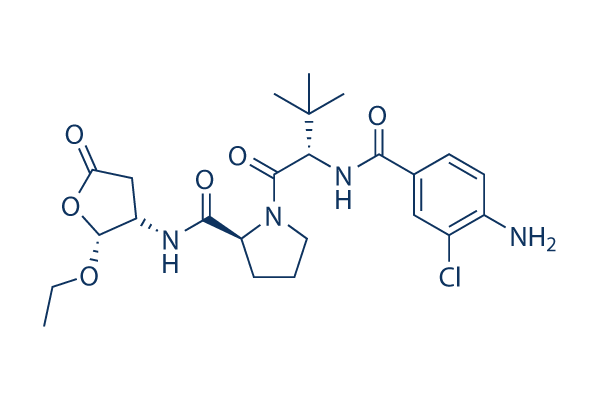Transfection of MEF2D reactivates muscle exact reporter gene constructs and muscle certain gene expression in the two RD and RH30 cell lines. Expression of exogenous MEF2D promotes differentiation as assayed by myosin heavy chain staining from the RH30 ARMS cell line. Steady with these effects, we discover that restoration of MEF2D in RH30 cells lowers proliferation, motility and anchorage independent growth in vitro. Also, the RH30 cells expressing exogenous MEF2D cannot create tumors in a xenograft model, as opposed to RH30 cells expressing a vector management. Results MEF2D is down regulated in RMS cells To understand the deregulation of myogenesis in RMS cells, we initial determined the degree of myogenin, MyoD and linked co elements in RMS cells in comparison towards the ordinary expression levels current through skeletal muscle differentiation. Four independently derived RMS cell lines were implemented for this examination.
The ERMS subtype was represented by RD and RD2 cells as well as ARMS subtype was represented by RH30 and RH28 cells. Murine C2C12 cells, a commonly made use of myo genic cell line, have been implemented as being a comparative cell line for RMS cells. Myogenin was not detectable describes it in proliferating myoblasts, but was strongly induced on differentiation. MyoD was expressed in proliferating myoblasts and maintained expression all through differentiation. We found that myogenin was expressed in all assayed RMS cell lines. The amounts of myogenin in many RMS lines have been greater compared to the level observed in typical dif ferentiating myoblasts. The level of myogenin observed in RD2 cells was not as robust as was observed during the other RMS lines, but the level was even now similar or modestly greater than that observed in normal differentiat ing myoblasts.
We also assayed for MyoD expression and found the expression of MyoD was related towards the description expression of MyoD observed in myoblasts. The cell lines on the ARMS subtype, RH30 and RH28, expressed MyoD at amounts comparable or slightly larger to that observed in regular myoblasts. When expressed at a lower level than that found in ARMS cells, MyoD expression was also detected in the two cell lines of your ERMS subtype,  RD and RD2. Subsequent, we assayed the expression profile from the co variables needed by myogenin in C2C12 and RMS cells. We looked for your E proteins by assaying for each the E2A variants and HEB. The E2A locus encodes the 2 slice variants, E12 and E47, which vary by differential use of a single exon. E1247 and HEB are identified for being expressed in proliferating and differentiating myoblasts. We observed that the RMS cell lines showed apparently usual ranges of expression of HEB. RD and RH30 cell lines have been employed to confirm expression of E1247 and we yet again observed substantial amounts in the E proteins. We subsequent examined the expression from the MEF2 family members in C2C12 cells and RMS cells and identified that while MEF2A, MEF2B and MEF2C have been expressed, MEF2D was dramatically down regulated in RMS cells when when compared with the levels noticed in C2C12 cells.
RD and RD2. Subsequent, we assayed the expression profile from the co variables needed by myogenin in C2C12 and RMS cells. We looked for your E proteins by assaying for each the E2A variants and HEB. The E2A locus encodes the 2 slice variants, E12 and E47, which vary by differential use of a single exon. E1247 and HEB are identified for being expressed in proliferating and differentiating myoblasts. We observed that the RMS cell lines showed apparently usual ranges of expression of HEB. RD and RH30 cell lines have been employed to confirm expression of E1247 and we yet again observed substantial amounts in the E proteins. We subsequent examined the expression from the MEF2 family members in C2C12 cells and RMS cells and identified that while MEF2A, MEF2B and MEF2C have been expressed, MEF2D was dramatically down regulated in RMS cells when when compared with the levels noticed in C2C12 cells.
Lysyl hydroxylase signal
An enzyme that, in humans, is encoded by the LOX gene.
